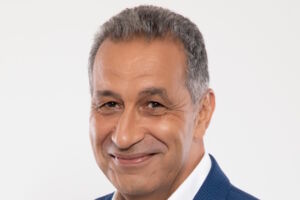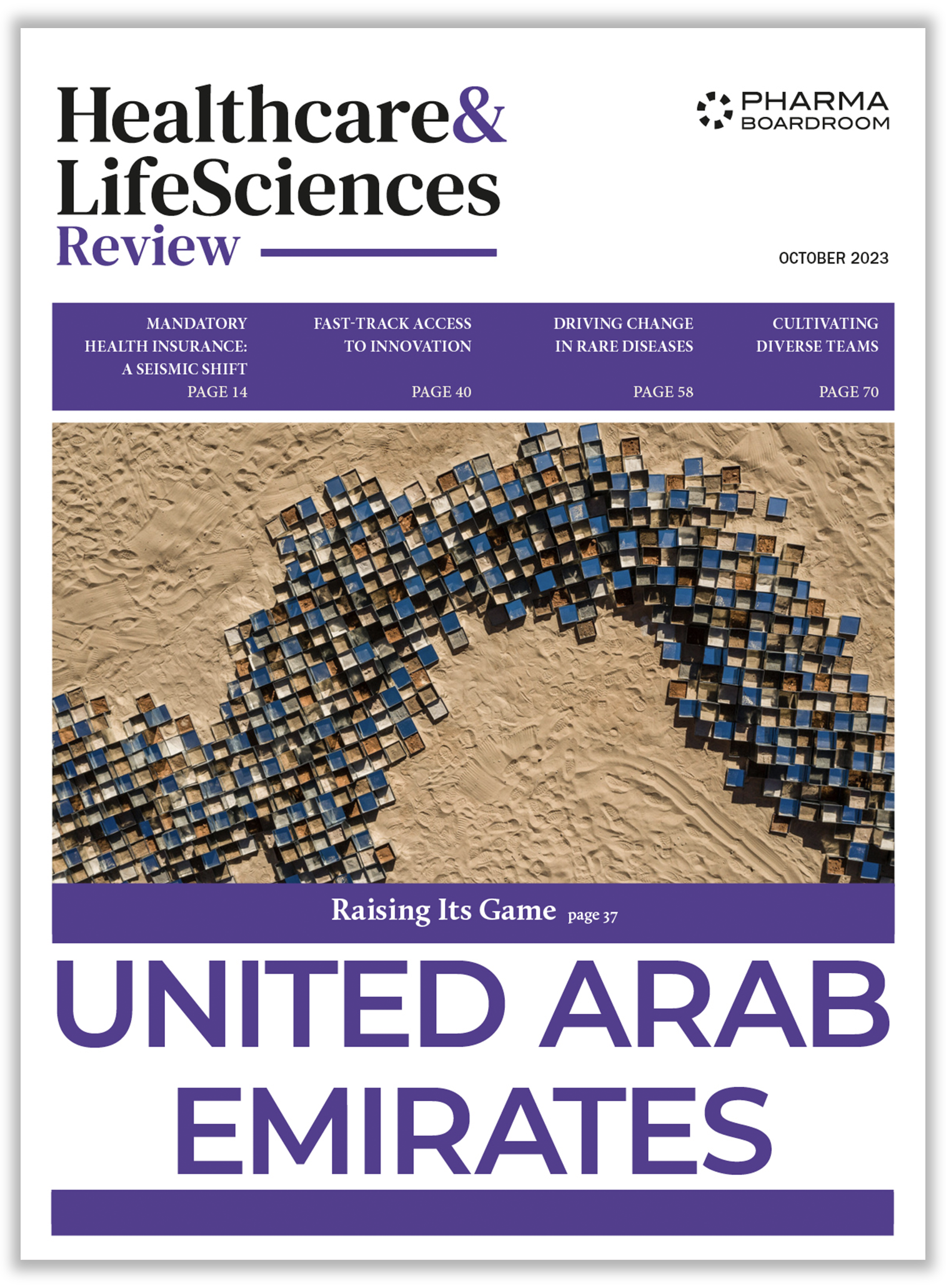CSL Behring - which specalises in plasma-derived, and recombination therapeutic products - has undergone significant expansion in the Middle East and Africa (MEA) region in recent years under Hassan Herrou. He explains why building partnerships with the relevant authorities as well as patient associations is vital to fostering access in his region, some of the excellent infrastructure and regulatory frameworks for orphan therapies already established in MEA's leading countries, and why there is still scope for rare diseases to take on a more prominent position on governments' healthcare agendas.
The last time we met was in 2021 and you were new in your position. What has happened since then?
As a refresher, CSL Behring products, at their core, are based around plasma collection. During the COVID-19 period, it was a challenge to collect plasma, therefore, the market for plasma-derived products naturally faced some challenges. Nevertheless, I am happy to say this has rebounded and we are now back to normal pre-COVID levels.
Since we last spoke we are expanding CSL products portfolio in Hemophilia with new recombinant products. Thus far, we have expanded our portfolio with these treatments in Saudi Arabia, the UAE and across the GCC countries. Additionally, we are looking towards country expansion and assessing the market situation in West and East Africa to find ways to better serve the patients in high need. We have offices in Saudi Arabia and Dubai, using the latter as a business hub to work with other market distributors.
Furthermore, the Middle East and Africa (MEA) cluster includes the GCC countries with innovation hubs and premium prices, making it an area all pharmaceutical companies want to invest in. Regardless, the entire region necessitates a diverse approach. For example, in Algeria, Morocco and Egypt you must focus more on market access, while in other areas in West and East Africa where we are not as present, we are focusing more on discussing with authorities how we can best serve patients with our products.
How important are relationships with relevant authorities in MEA when delivering your products to patients, given the complex nature of these products and the idiosyncrasies of governmental institutions across the region?
Very important. To give you an example of what we do, two years ago we worked with the PhRMA MEA industry association to set up a rare disease working group. We worked with authorities in Saudi Arabia and the UAE to assess how we can build a framework for orphan drugs using blood plasma products and look at how to fast-track market access in countries where the process is normally more complex.
All in all, authorities are critical for us – as are patient associations – and interactions/collaborations with these stakeholders will play a key role in eventually bringing products to market. Another concern for the region is disease awareness, especially as rare and orphan diseases affect almost four million patients across the MEA region. Despite these numbers, awareness remains extremely low, foregrounding the importance of working with relevant authorities to increase the population’s knowledge and understanding.
The Saudi and UAE authorities are keen to play up their regulatory leadership positioning in the region, including around early access mechanisms for innovative rare disease therapies. Do you feel that other MEA regulatory bodies and governments are looking to draw from this experience in bringing these therapies to their own countries’ patients?
Saudi Arabia and the UAE are certainly leading the way on the regulatory front, with many other countries now beginning to utilize similar fast-track models. Egypt, for example, has opened a regulatory fast-track for orphan and rare disease therapies, as has Algeria, while South Africa made a similar move 12 months ago.
CSL Behring recently launched its gene therapy for Hemophilia B in the US and the Top Five European markets and, looking at the developing regulatory landscape in MEA, we are confident of being able to bring it to select regional markets in the not-too-distant future.
Do you feel that sufficient enabling infrastructure in the clinical setting exists for gene therapies to be adopted in the MEA region?
I do. I feel that the region is ready to bring in these types of therapies, both in terms of regulatory affairs as well as pricing schemes. There have been proactive moves on behalf of many governments in the region to enable the introduction of gene therapies to the market. In terms of price, gene therapies generally come with a high level of cost, so committees have been set up to select and profile which patients can receive such innovation and the, in many cases, expensive care. Nevertheless, we are ready here and developing schemes that suit the region best.
Many countries across the world have national-level programs in place to facilitate the diagnosis and treatment of certain rare and orphan diseases. Do such programs exist in your region, and if not, how could they help?
There are no specific programs in place, but CSL Behring has managed to engage in strong partnerships with key institutions in Saudi Arabia and the UAE. At CSL Behring, we are working to act as a bridge and facilitate positive and constructive relationships between the relevant authorities and the commercial sector of the pharmaceutical industry. On top of that, we are working with patient associations and establishing positive dialogue there also. Collaboration between all stakeholders – whether government institutions, healthcare providers, pharmaceutical companies, and patient associations – will be crucial in driving the diagnosis and treatment of rare diseases forward in our region.
How does the fact that patient associations in your region are not as well developed as their equivalents in the US and Europe shape your patient engagement efforts in MEA? Does this necessitate more grassroots engagement at the family level?
This can be a very sensitive topic in many parts of the region where disease awareness is not high, even in MEA’s most developed markets like Saudi Arabia and the UAE. As part of CSL Behring’s engagement efforts, we work with physicians to give them the relevant tools to discuss diagnoses with families, though this is a cultural change and will take some time to fully take effect.
A significant part of the access piece is clinical trials, where Saudi Arabia and the UAE are looking to establish a strong footprint. How far away is CSL Behring from bringing clinical trials to the MEA region and how receptive are authorities to this idea?
Clinical trials are incredibly important for CSL Behring globally and are on top of the agenda. The physicians within MEA have sufficient experience and knowledge gained from working and studying in Europe and the US, the right patient pools exist, and a good enabling infrastructure is in place. Therefore, there is a fantastic opportunity for CSL Behring to take the next step and conduct more multicenter clinical trials in these two countries.
In terms of the receptiveness of authorities to this idea, it is about building connections with key individuals within administrative bodies. CSL Behring is proactively and constructively engaging in dialogue with the relevant personnel in the UAE and Saudi Arabia to bolster the landscape and establish these countries as significant global clinical trial nodes.
These seem to be exciting times for CSL with a new CEO, the acquisition of Vifor, and big recent investments in new manufacturing facilities and headquarters. Has there been a significant change in company direction and how are these global shifts playing out at the MEA level?
Looking at the trajectory of the company over the last 20 years, it has gone from a local Australian company to one of the largest biotech players in the world. This has been backed by diversity in business units with gene therapy, vaccines, and our specialty pharmaceuticals arm Vifor. These business areas stand completely independent of each other and all commercial operations operate as standalone entities.
We have six therapeutic areas as a company and are focused heavily on the areas of immunology and haematology. If you look at the company pipeline, we hope to launch at least 12 products over the next five years. Within the region, some countries – such as the UAE and Saudi Arabia – will launch these products in line with global timeframes, while others will launch later.
How ready is the MEA team for this upcoming wave of product launches?
Our commercial operations are more than ready. However, we will need to bolster our medical affairs function within Saudi Arabia and the UAE to have the best impact. On top of that, we must have a strong focus on market access due to the premium price of plasma-derived treatments. Therefore, CSL Behring is both developing and looking for professionals with this market access mindset. This means we should be working on a launch at least three years before it happens. This proactive approach is even more important in areas such as recombinant therapies which have such fierce competition from other large biotech players looking to bring forward their innovations.
Having lived and worked in Dubai for several years, how have you seen the city evolve as an industry hub? Do you feel that there are sufficient levels of access to talent and enabling infrastructure to continue this evolution in the coming years and foreground Dubai’s positioning as a regional leader?
The infrastructure is here, and the government is putting in place the correct platform to establish Dubai as a global hub. The city is evolving every day and is already top-notch in terms of structure. Pharmaceutical companies want to bring innovation to the region and the market is ready. As mentioned earlier, this means market access is of paramount importance as innovation is linked to pricing and we must be able to manage this to ensure our products are competitive in the market.
Do you have a final message for our global audience?
There has been significant investment in areas like cardiovascular disease and vaccines in MEA, but rare diseases have only recently started to appear on the strategic agenda of healthcare authorities. Part of our role, along with HCPs and patient associations, is to continue bolstering the positioning of rare diseases on this agenda and help build a framework for the launch of important new molecules. Great progress has been made on this in the UAE and Saudi Arabia, but there is much more work to do across other countries in the region.







